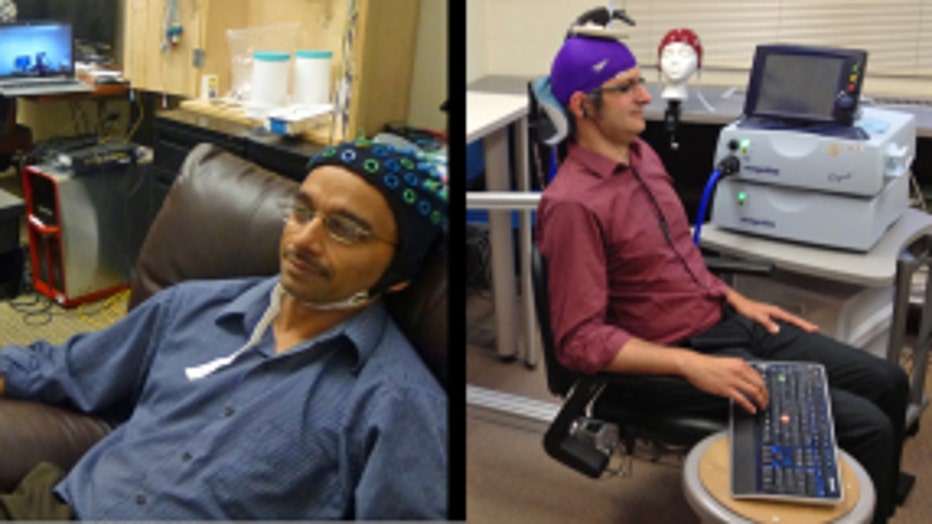Mind control? UW researcher's 'brain-to-brain' experiment a success
SEATTLE -- You may soon be able to control another person's actions simply by imagining what you want them to do.
It may sound like science fiction, but this month a researcher at the University of Washington controlled the hand motions of another researcher simply by sending him a "brain signal."
Researchers believe the experiment shows the first example of a successful human "brain-to-brain" interface, UW researchers said in a release, clearing the way for further advancements in brain-to-brain communication utilizing electrodes and the Internet.
"The Internet was a way to connect computers, and now it can be a way to connect brains," Stocco said. "We want to take the knowledge of the brain and transmit it directly from brain-to-brain."
Sound eerie? Researchers said human-to-human brain communication is far from advanced, but the groundwork is there.
According to the release. researcher Rajesh Rao sent a brain signal to Andrea Stocco on the other side of the UW campus, causing Stocco's finger to move on a keyboard. In essence, Rao -- wearing an electrode-based cap -- thought of a movement he wanted to perform. The thought nearly simultaneously transferred -- via the Internet and the electrode caps -- to Stocco, whose finger involuntarily twitched in the way Rao had imagined.

Courtesy University of Washington
The blind test was performed with Rao playing a video game. When he was supposed to fire a cannon at a target, he imagined moving his right hand (being careful not to actually move his hand), causing a cursor to hit the "fire" button. Almost instantaneously, Stocco, who wore noise-canceling ear-buds and wasn't looking at a computer screen, involuntarily moved his right index finger to push the space bar on the keyboard in front of him, as if firing the cannon.
Researchers said electrodes and simulators were placed in the correct spots on each researchers head, utilizing the location of the left motor cortex controlling hand movement. Stocco said he compared the sensation to the feeling of a nervous tic. Rao said he hopes the experiment will open up doors for more two-way brain-to-brain communication.
"It was both exciting and eerie to watch an imagined action from my brain to get translated into actual action by another brain," Rao said.
Rao said currently the technology only reads certain simple brain signals, and not complex ones like a person's thoughts. He also said it doesn't currently give anyone the ability to control one's actions against one's will.
"I think some people will be unnerved by this because they will overestimate the technology," Assistant Professor in Psychology at the UW Institute for Learning and Brain Sciences Chantel Prat said. "There's no possible way the technology that we have could be used on a person unknowingly without their willing participation."
Rao and Stocco next plan to conduct an experiment that would transmit more complex information from one brain to the other. If that works, they then will conduct the experiment on a larger pool of subjects.

